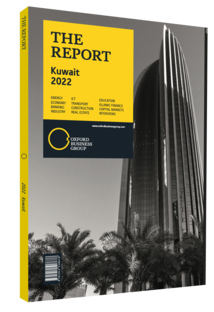How Kuwait is expanding downstream value in hydrocarbons industry
Kuwait’s Clean Fuels Project (CFP) is among the most important endeavours associated with the country’s downstream energy segment, and it is expected to help boost Kuwait’s global position in oil refining.
The project’s main objective was to expand and upgrade the Mina Al Ahmadi and Mina Abdullah refineries – owned and operated by the Kuwait National Petroleum Company (KNPC) – into an integrated refining complex that produces quality and eco-friendly products that meet the requirements of a diversified market. The CFP is part of Kuwait’s wider efforts to add downstream value to its significant hydrocarbons resources and to expand its industrial sector.
Project Profile
Launched in 2014, the CFP aimed to modernise and increase the combined capacity of the Mina Al Ahmadi and Mina Abdullah refineries from 736,000 barrels per day (bpd) to 800,000 bpd, an increase of 8.8%. Another important aspect of the project was to reduce the sulphur content of the firm’s petroleum products to 10 parts per million (ppm). Work at Mina Al Ahmadi concluded in 2020, and the units at Mina Abdullah became fully operational after construction on the site was completed in March 2022. These efforts have helped to reduce emissions of carbon, sulphur, nitrogen and other hazardous pollutants and align the refineries’ output with global best practices. To that end, KNPC’s clean products meet international standards, including Euro 4 and Euro 5.
The technologies and equipment utilised were sourced from 199 companies in 23 countries, allowing the refineries to convert heavy, low-quality inputs into refined products while also reducing KNPC’s environmental impact. For example, KNPC can now produce fuel oil, also known as bunker fuel, with a sulphur level of 0.5% mass by mass, in accordance with the requirements published by the International Maritime Organisation in 2020. In addition, Kuwait exported its first shipment of 35,000 tonnes of low-sulphur and low-aromatic gasoline from Mina Al Ahmadi in August 2022.
Financing
Kuwait Petroleum Corporation, KNPC’s parent company, provided 30% of funding for the CFP, with the remaining 70% coming from foreign investors. The project was split into three parts due to its size, with each carried out by consortia of international companies. For example, the first part was executed by UK-based energy services company Petrofac, Samsung Engineering and Chicago Bridge & Iron Company. The investment was the largest in the Kuwaiti oil industry to date, with capital expenditure estimated at $15.2bn.
Economic Outcomes
The CFP had a positive impact on Kuwait’s economy because of a considerable increase in spending by local contractors during the implementation phase, at $3.6bn. Partly as a result of the project, KNPC reported its highest annual net profit in nearly a decade at $1.1bn in FY 2021/22, a 135% increase from the figure of $476.4m for the previous fiscal year. The company’s outlook for FY 2022/23 is positive, and the company expects to see the full benefits of the project over the next fiscal year.
The refineries are part of an integrated downstream industrial complex created to meet local demand and export excess fuel. The project is expected to boost the market share of Kuwait’s downstream petroleum products in international markets and create added value to Kuwaiti hydrocarbons. This is especially important since international demand for automotive fuel is high due to recent supply challenges. These trends have also led KNPC to pursue new markets in South-east Asia and Europe to generate more diverse sources of income.
Positive Implications
In line with New Kuwait 2035, the CFP has generated significant employment and upskilling opportunities in the country, creating around 800 jobs for Kuwaiti citizens and training approximately 650 new employees. Indeed, Kuwaitis represent at least 30% of the workforce per contract. The CFP is expected to boost Kuwait’s regional and international position in the clean fuel market and enhance the country’s long-term economic competitiveness.
You have reached the limit of premium articles you can view for free.
Choose from the options below to purchase print or digital editions of our Reports. You can also purchase a website subscription giving you unlimited access to all of our Reports online for 12 months.
If you have already purchased this Report or have a website subscription, please login to continue.

